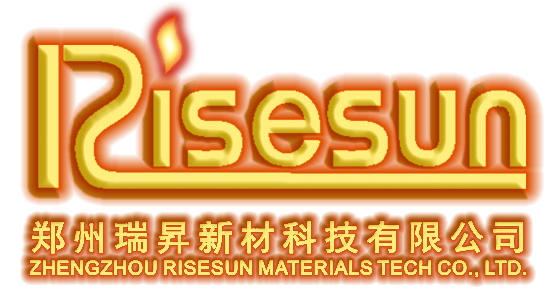12
2024
-
10
Why Choose Kanthal Heating Elements for Your Next Project? Discover the Benefits and Applications
Why Choose Kanthal Heating Elements for Your Next Project? When it comes to electrical heating solutions, choosing the right heating element is crucial for the success of your project. Among the myriad options available, Kanthal heating elements stand out for their remarkable properties and extensive applications. In this article, we will explore the reasons why Kanthal elements are a top choice f
Why Choose Kanthal Heating Elements for Your Next Project?
When it comes to electrical heating solutions, choosing the right heating element is crucial for the success of your project. Among the myriad options available, Kanthal heating elements stand out for their remarkable properties and extensive applications. In this article, we will explore the reasons why Kanthal elements are a top choice for various industries, including their durability, efficiency, and versatility.
Table of Contents
- Introduction to Kanthal Heating Elements
- What Is Kanthal?
- Benefits of Kanthal Heating Elements
- Applications of Kanthal Heating Elements
- Kanthal vs. Other Heating Elements: A Comparative Analysis
- Installation and Maintenance of Kanthal Heating Elements
- Safety Considerations When Using Kanthal Heating Elements
- Frequently Asked Questions (FAQs)
- Conclusion
Introduction to Kanthal Heating Elements
Kanthal heating elements are made from a unique alloy that offers several benefits over traditional heating elements. Known for their high-temperature resistance and durability, Kanthal elements are extensively used in various heating applications, including industrial furnaces, kilns, and laboratory equipment. Their ability to withstand extreme conditions while maintaining efficiency makes them a go-to choice for engineers and manufacturers alike.
What Is Kanthal?
Kanthal is a brand name for a range of high-temperature alloys, primarily composed of iron, chromium, and aluminum. These alloys are specifically designed for resistive heating applications. The most common grades of Kanthal include Kanthal A-1, Kanthal D, and Kanthal AF, each serving unique applications and offering distinct advantages.
Types of Kanthal Alloys
- Kanthal A-1: This is the most widely used Kanthal alloy, known for its excellent oxidation resistance and high electrical resistance. It’s ideal for heating elements operating up to 1400°C (2552°F).
- Kanthal D: Offering a slightly better oxidation resistance than A-1, Kanthal D is suitable for applications where high temperatures are a requirement.
- Kanthal AF: A newer alloy, Kanthal AF provides higher strength and longer life at elevated temperatures, making it perfect for high-performance applications.
Benefits of Kanthal Heating Elements
Choosing Kanthal heating elements comes with a host of advantages that can enhance your project’s efficiency and longevity. Here are some compelling reasons to consider:
1. High Temperature Resistance
Kanthal heating elements can operate at significantly higher temperatures than conventional heating elements. This property allows them to be utilized in a wide range of high-temperature applications, such as metal processing and glass production.
2. Superior Oxidation Resistance
Kanthal alloys exhibit exceptional oxidation resistance, which prevents degradation even in harsh environments. This characteristic extends the life of the heating elements, reducing the need for frequent replacements.
3. Excellent Electrical Properties
With high electrical resistance, Kanthal heating elements generate more heat for a given electrical input, improving energy efficiency. This efficiency translates to lower operational costs over time.
4. Versatility in Applications
Kanthal heating elements can be used in various applications, ranging from resistive heating in industrial furnaces to laboratory equipment. Their adaptability makes them suitable for numerous industries.
5. Ease of Fabrication
Kanthal materials can be easily fabricated into various shapes and sizes, allowing for customization to meet specific project requirements. This flexibility can lead to innovative designs tailored to unique heating needs.
Applications of Kanthal Heating Elements
The versatility of Kanthal heating elements enables their use across a variety of industries. Here are some notable applications:
1. Industrial Furnaces
Kanthal heating elements are commonly used in industrial furnaces due to their ability to withstand extreme temperatures and corrosive environments. They are often found in metal processing, ceramics manufacturing, and glassmaking.
2. Laboratory Equipment
In laboratories, Kanthal elements are used in furnaces and ovens for material testing and scientific research. Their precision and reliability are crucial for achieving accurate results in experiments.
3. HVAC Systems
Kanthal heating elements are employed in heating, ventilation, and air conditioning (HVAC) systems. They provide efficient heating solutions for residential and commercial buildings, enhancing comfort and energy management.
4. Food Processing
In the food industry, Kanthal heating elements are utilized in ovens and cooking equipment. Their ability to maintain consistent temperatures is vital for food safety and quality.
5. Electronics Manufacturing
Kanthal elements play a significant role in electronics manufacturing, particularly in soldering and heat treatment processes. Their efficiency contributes to high-quality production standards.
Kanthal vs. Other Heating Elements: A Comparative Analysis
When choosing heating elements, it’s essential to compare Kanthal with other options available in the market. Here’s how Kanthal stacks up against some common alternatives:
1. Kanthal vs. Nichrome
While both Kanthal and Nichrome are used in high-temperature applications, Kanthal offers superior oxidation resistance and longevity, making it more suitable for extreme conditions.
2. Kanthal vs. Silicon Carbide
Silicon carbide elements are known for their high temperature capabilities but can be more fragile than Kanthal. Kanthal’s durability makes it a preferred choice for applications requiring robustness.
3. Kanthal vs. Molybdenum Disilicide
Molybdenum disilicide is used in high-temperature furnaces but can be more expensive and less widely available than Kanthal, which provides a cost-effective solution without compromising performance.
Installation and Maintenance of Kanthal Heating Elements
Proper installation and maintenance are critical to maximizing the lifespan and efficiency of Kanthal heating elements. Here are some guidelines:
1. Installation Guidelines
- Ensure proper electrical connections to avoid overheating and potential failures.
- Follow manufacturer recommendations for installation to achieve optimal performance.
- Maintain adequate spacing to allow for heat expansion.
2. Maintenance Best Practices
- Regularly inspect heating elements for signs of wear or damage.
- Clean the elements to remove any residues that could affect performance.
- Monitor operational temperatures to ensure they remain within specified limits.
Safety Considerations When Using Kanthal Heating Elements
Safety should always be a top priority when working with heating elements. Here are essential safety considerations:
1. Electrical Safety
Ensure that all electrical connections comply with local regulations and standards to prevent electrical hazards.
2. Heat Management
Implement effective heat management strategies to avoid overheating, which can result in equipment damage or fire hazards.
3. Personal Protective Equipment (PPE)
When handling Kanthal elements, wear appropriate PPE, such as heat-resistant gloves and safety goggles, to protect against burns and other injuries.
Frequently Asked Questions (FAQs)
1. What temperatures can Kanthal heating elements withstand?
Kanthal heating elements can operate at temperatures up to 1400°C (2552°F), depending on the specific alloy used.
2. How long do Kanthal heating elements last?
With proper care and maintenance, Kanthal heating elements can last several years, significantly longer than many traditional heating elements.
3. Can Kanthal heating elements be customized?
Yes, Kanthal elements can be fabricated into various shapes and sizes to meet specific project requirements, providing flexibility in design.
4. Are Kanthal heating elements safe to use?
When installed correctly and used in accordance with safety guidelines, Kanthal heating elements are safe and reliable.
5. Where can I purchase Kanthal heating elements?
Kanthal heating elements can be purchased from various industrial suppliers and specialty heating element manufacturers worldwide.
Conclusion
Choosing Kanthal heating elements for your next project offers numerous benefits, including high-temperature resistance, excellent oxidation resistance, and versatility across various applications. These elements not only enhance efficiency but also provide a reliable solution for demanding heating needs. By understanding the advantages and proper use of Kanthal heating elements, you can ensure the success of your electrical heating projects and enjoy long-lasting performance.



